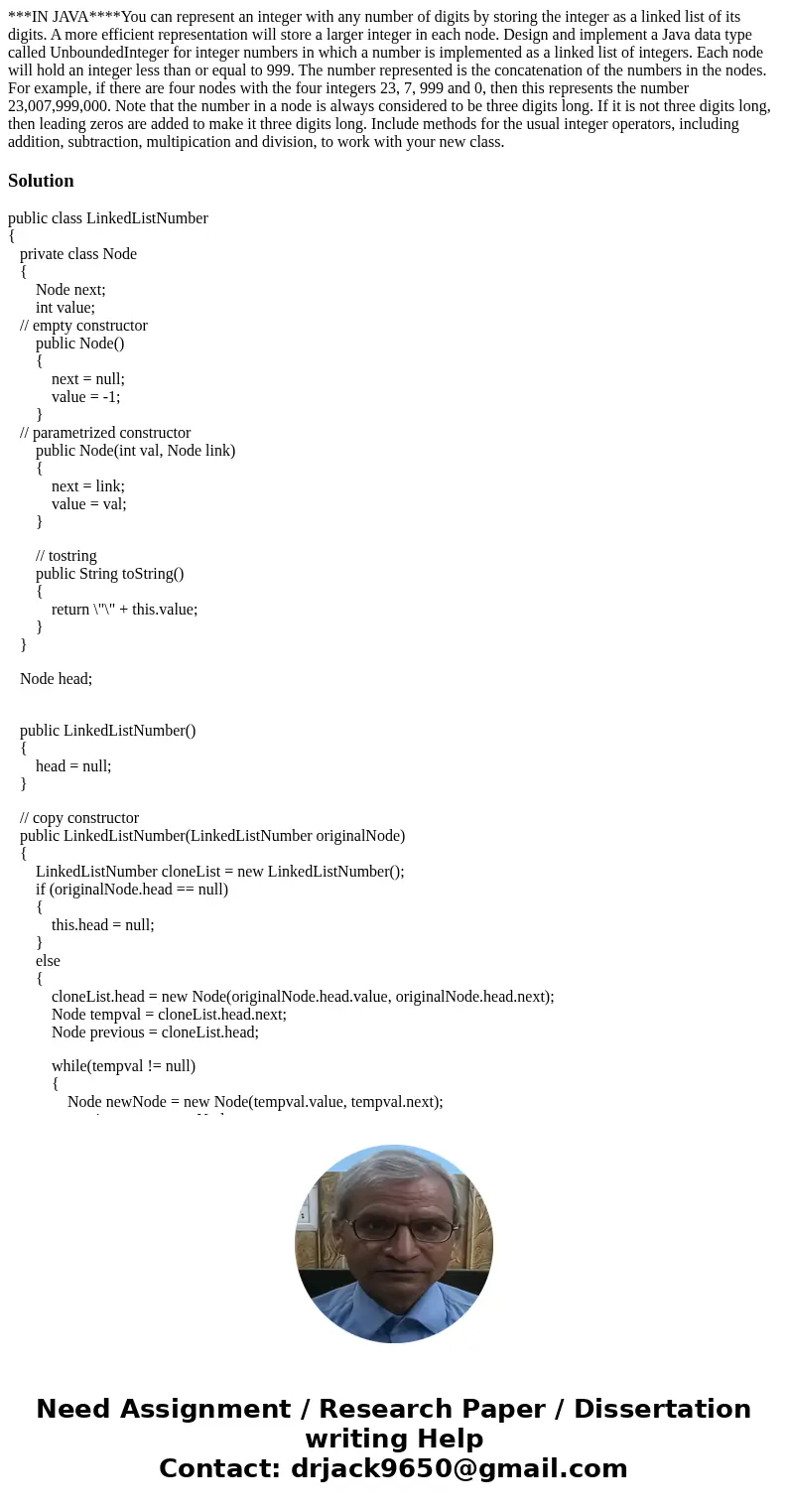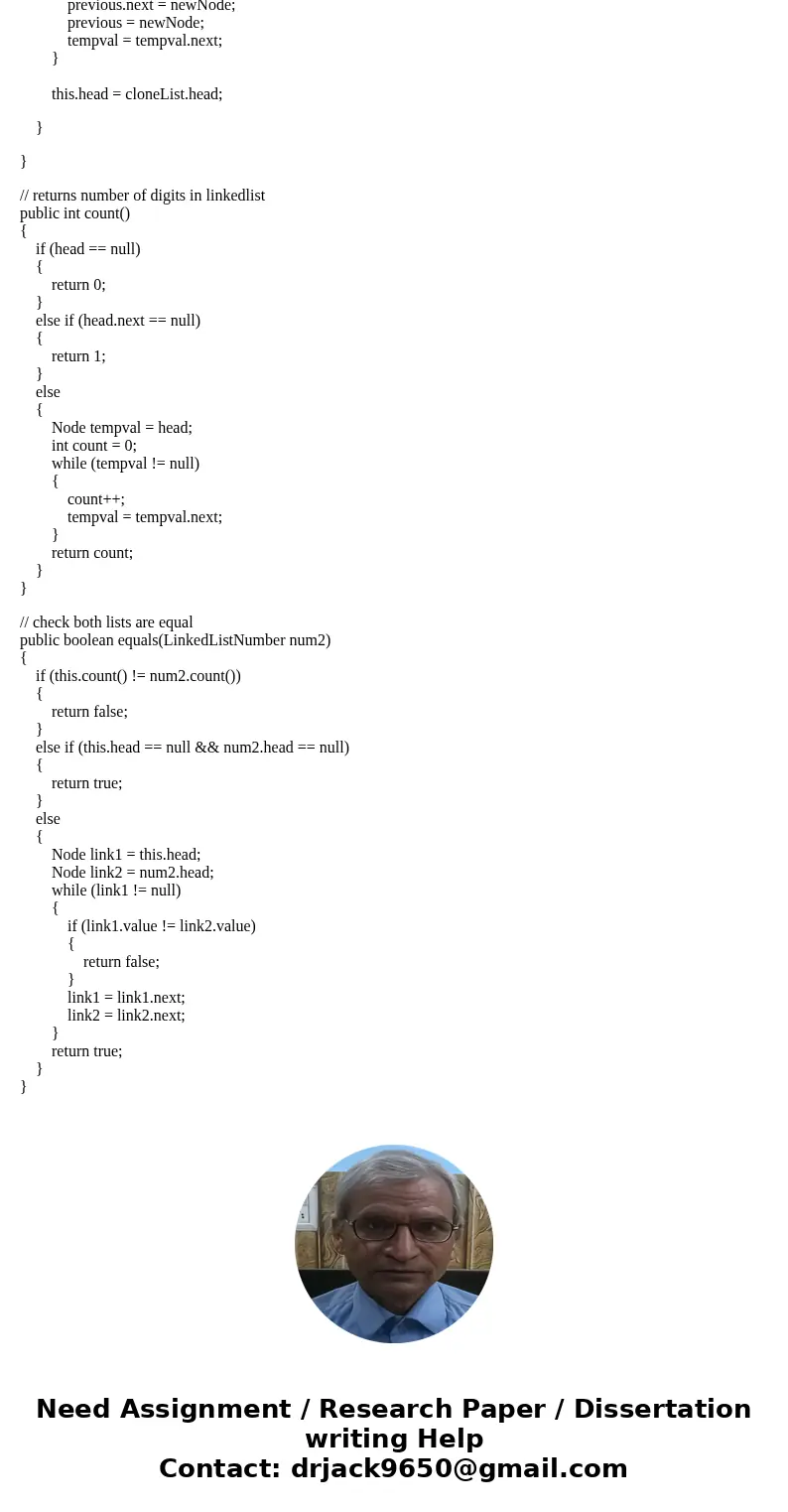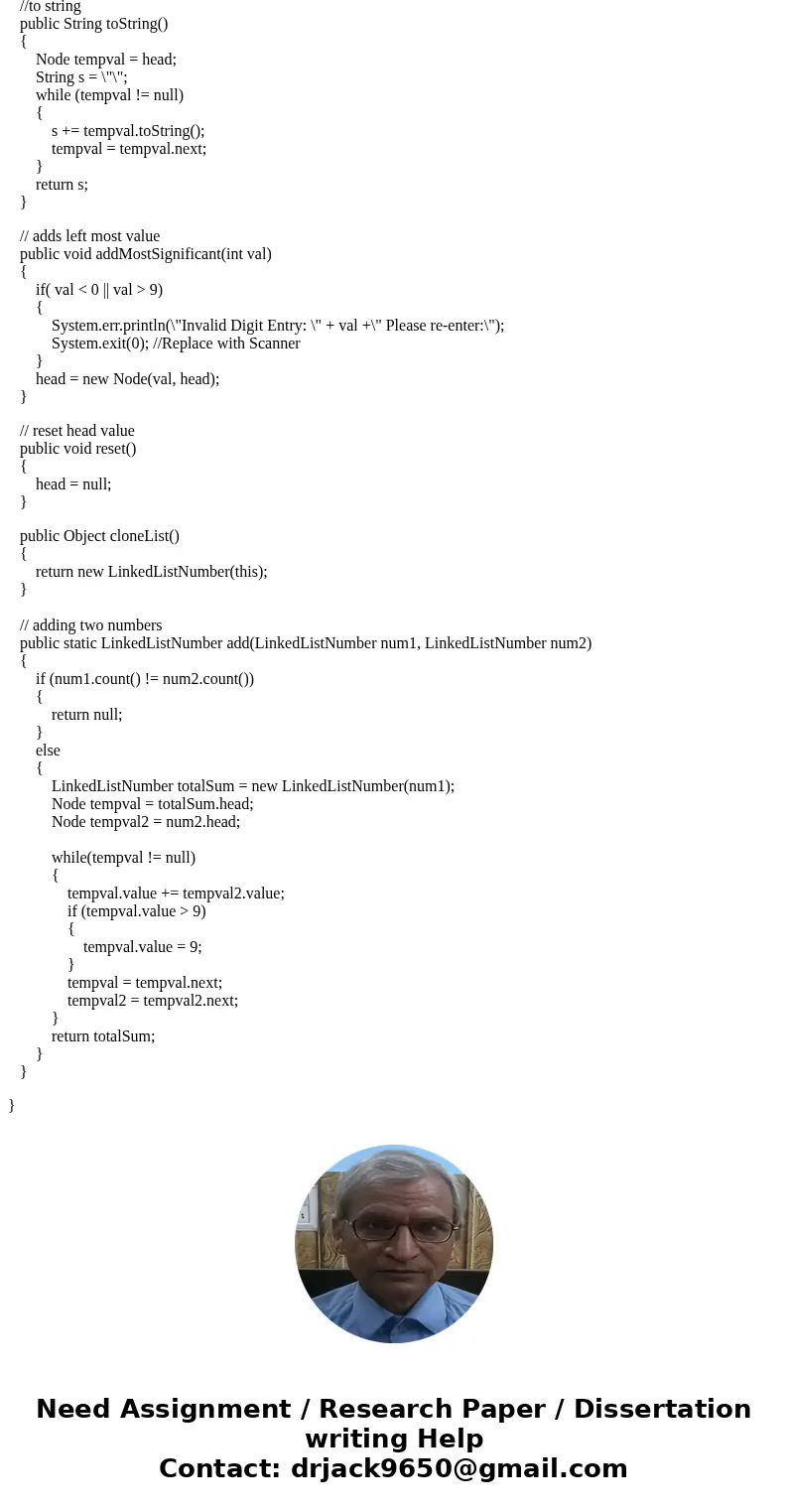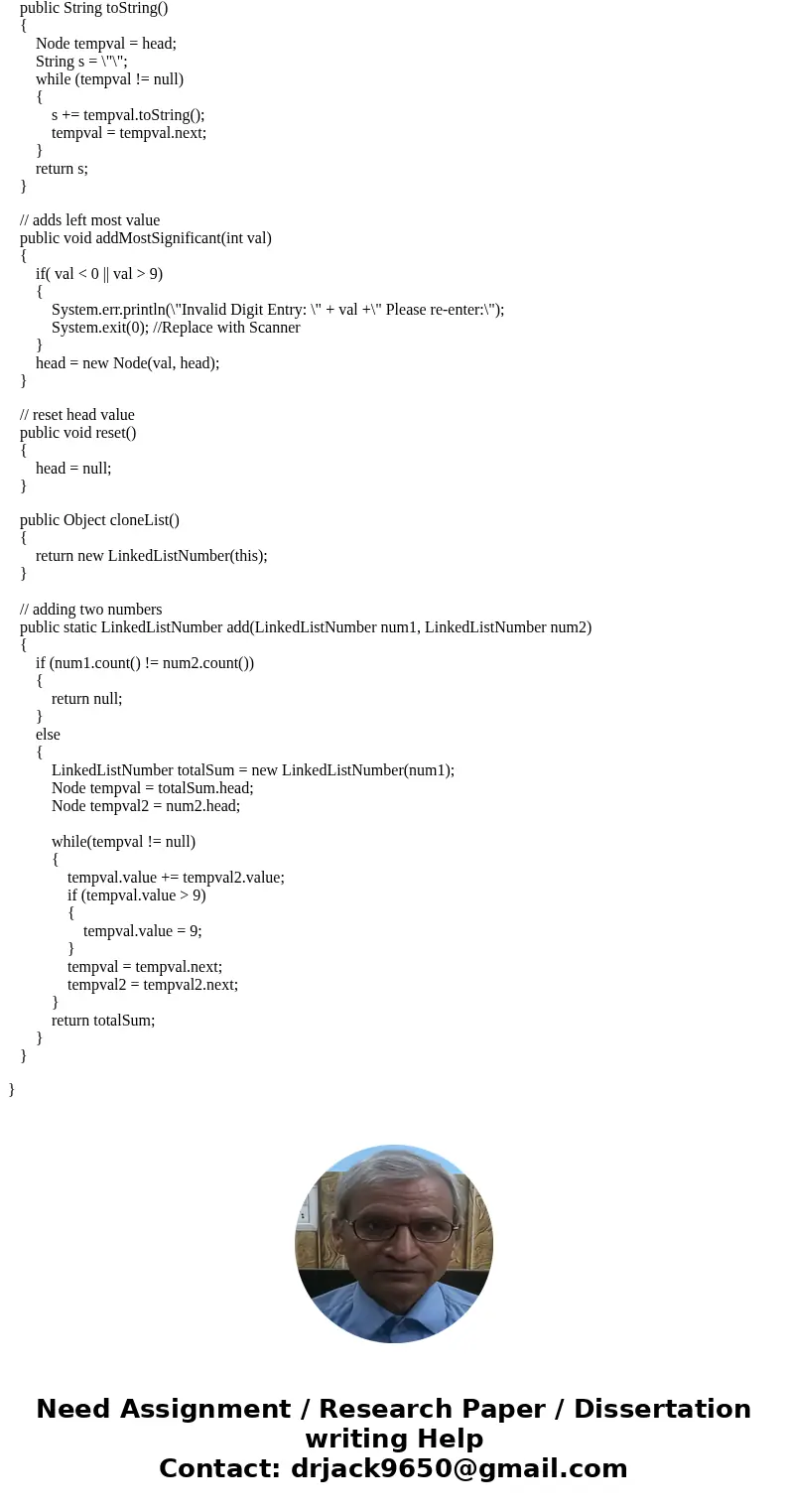IN JAVAYou can represent an integer with any number of digit
***IN JAVA****You can represent an integer with any number of digits by storing the integer as a linked list of its digits. A more efficient representation will store a larger integer in each node. Design and implement a Java data type called UnboundedInteger for integer numbers in which a number is implemented as a linked list of integers. Each node will hold an integer less than or equal to 999. The number represented is the concatenation of the numbers in the nodes. For example, if there are four nodes with the four integers 23, 7, 999 and 0, then this represents the number 23,007,999,000. Note that the number in a node is always considered to be three digits long. If it is not three digits long, then leading zeros are added to make it three digits long. Include methods for the usual integer operators, including addition, subtraction, multipication and division, to work with your new class.
Solution
public class LinkedListNumber
{
private class Node
{
Node next;
int value;
// empty constructor
public Node()
{
next = null;
value = -1;
}
// parametrized constructor
public Node(int val, Node link)
{
next = link;
value = val;
}
// tostring
public String toString()
{
return \"\" + this.value;
}
}
Node head;
public LinkedListNumber()
{
head = null;
}
// copy constructor
public LinkedListNumber(LinkedListNumber originalNode)
{
LinkedListNumber cloneList = new LinkedListNumber();
if (originalNode.head == null)
{
this.head = null;
}
else
{
cloneList.head = new Node(originalNode.head.value, originalNode.head.next);
Node tempval = cloneList.head.next;
Node previous = cloneList.head;
while(tempval != null)
{
Node newNode = new Node(tempval.value, tempval.next);
previous.next = newNode;
previous = newNode;
tempval = tempval.next;
}
this.head = cloneList.head;
}
}
// returns number of digits in linkedlist
public int count()
{
if (head == null)
{
return 0;
}
else if (head.next == null)
{
return 1;
}
else
{
Node tempval = head;
int count = 0;
while (tempval != null)
{
count++;
tempval = tempval.next;
}
return count;
}
}
// check both lists are equal
public boolean equals(LinkedListNumber num2)
{
if (this.count() != num2.count())
{
return false;
}
else if (this.head == null && num2.head == null)
{
return true;
}
else
{
Node link1 = this.head;
Node link2 = num2.head;
while (link1 != null)
{
if (link1.value != link2.value)
{
return false;
}
link1 = link1.next;
link2 = link2.next;
}
return true;
}
}
//to string
public String toString()
{
Node tempval = head;
String s = \"\";
while (tempval != null)
{
s += tempval.toString();
tempval = tempval.next;
}
return s;
}
// adds left most value
public void addMostSignificant(int val)
{
if( val < 0 || val > 9)
{
System.err.println(\"Invalid Digit Entry: \" + val +\" Please re-enter:\");
System.exit(0); //Replace with Scanner
}
head = new Node(val, head);
}
// reset head value
public void reset()
{
head = null;
}
public Object cloneList()
{
return new LinkedListNumber(this);
}
// adding two numbers
public static LinkedListNumber add(LinkedListNumber num1, LinkedListNumber num2)
{
if (num1.count() != num2.count())
{
return null;
}
else
{
LinkedListNumber totalSum = new LinkedListNumber(num1);
Node tempval = totalSum.head;
Node tempval2 = num2.head;
while(tempval != null)
{
tempval.value += tempval2.value;
if (tempval.value > 9)
{
tempval.value = 9;
}
tempval = tempval.next;
tempval2 = tempval2.next;
}
return totalSum;
}
}
}




 Homework Sourse
Homework Sourse